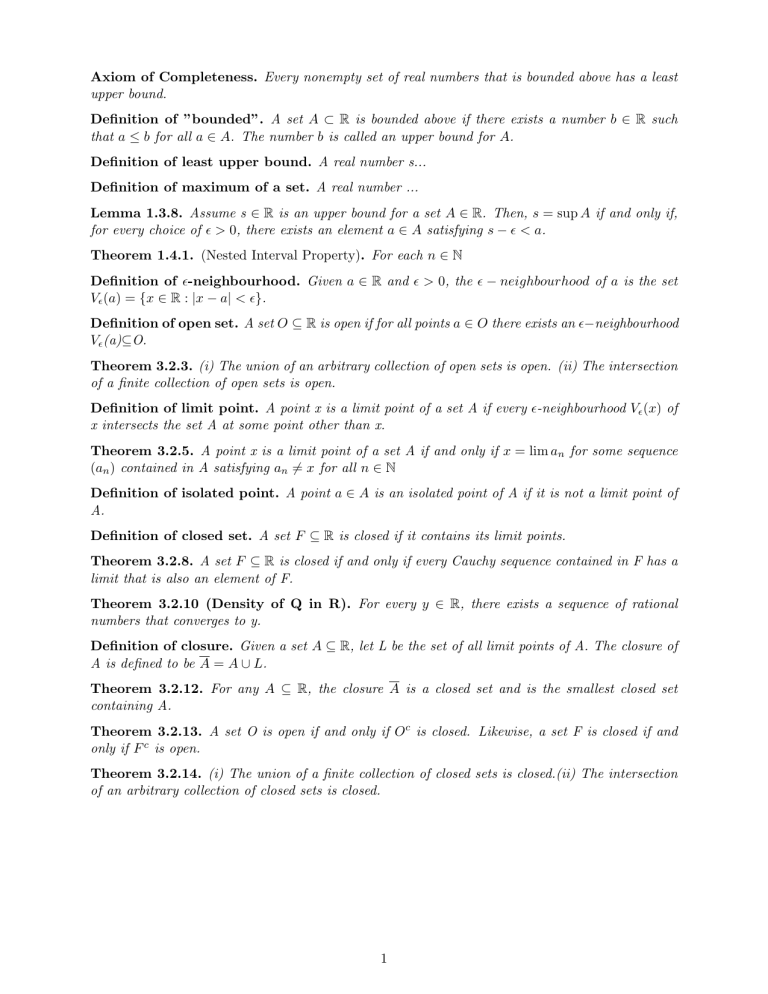
Axiom of Completeness. Every nonempty set of real numbers that is bounded above has a least
upper bound.
Definition of ”bounded”. A set A ⊂ R is bounded above if there exists a number b ∈ R such
that a ≤ b for all a ∈ A. The number b is called an upper bound for A.
Definition of least upper bound. A real number s...
Definition of maximum of a set. A real number ...
Lemma 1.3.8. Assume s ∈ R is an upper bound for a set A ∈ R. Then, s = sup A if and only if,
for every choice of > 0, there exists an element a ∈ A satisfying s − < a.
Theorem 1.4.1. (Nested Interval Property). For each n ∈ N
Definition of -neighbourhood. Given a ∈ R and > 0, the − neighbourhood of a is the set
V (a) = {x ∈ R : |x − a| < }.
Definition of open set. A set O ⊆ R is open if for all points a ∈ O there exists an −neighbourhood
V (a)⊆O.
Theorem 3.2.3. (i) The union of an arbitrary collection of open sets is open. (ii) The intersection
of a finite collection of open sets is open.
Definition of limit point. A point x is a limit point of a set A if every -neighbourhood V (x) of
x intersects the set A at some point other than x.
Theorem 3.2.5. A point x is a limit point of a set A if and only if x = lim an for some sequence
(an ) contained in A satisfying an 6= x for all n ∈ N
Definition of isolated point. A point a ∈ A is an isolated point of A if it is not a limit point of
A.
Definition of closed set. A set F ⊆ R is closed if it contains its limit points.
Theorem 3.2.8. A set F ⊆ R is closed if and only if every Cauchy sequence contained in F has a
limit that is also an element of F.
Theorem 3.2.10 (Density of Q in R). For every y ∈ R, there exists a sequence of rational
numbers that converges to y.
Definition of closure. Given a set A ⊆ R, let L be the set of all limit points of A. The closure of
A is defined to be A = A ∪ L.
Theorem 3.2.12. For any A ⊆ R, the closure A is a closed set and is the smallest closed set
containing A.
Theorem 3.2.13. A set O is open if and only if Oc is closed. Likewise, a set F is closed if and
only if F c is open.
Theorem 3.2.14. (i) The union of a finite collection of closed sets is closed.(ii) The intersection
of an arbitrary collection of closed sets is closed.
1

